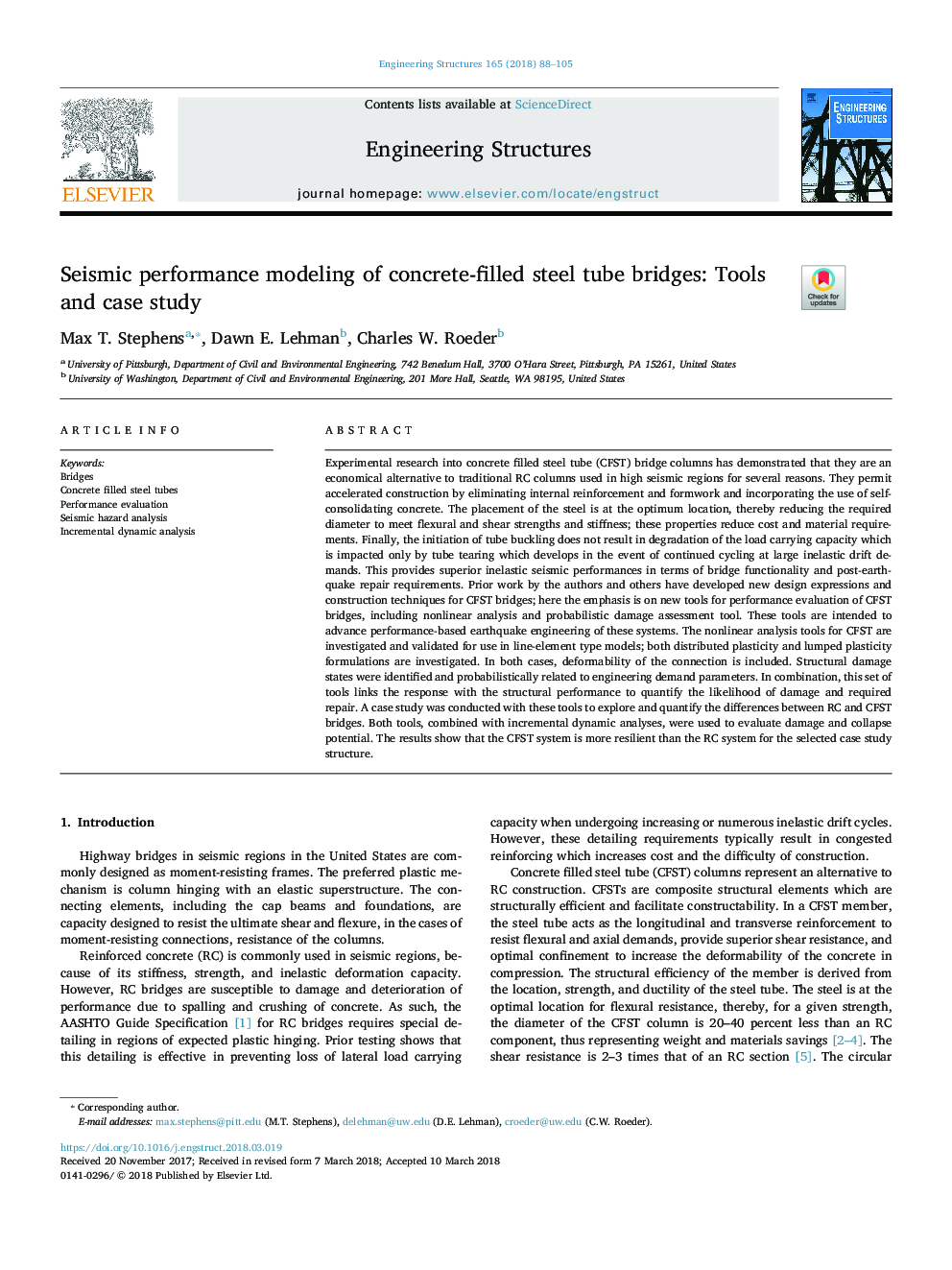| کد مقاله | کد نشریه | سال انتشار | مقاله انگلیسی | نسخه تمام متن |
|---|---|---|---|---|
| 6737587 | 1429062 | 2018 | 18 صفحه PDF | دانلود رایگان |
عنوان انگلیسی مقاله ISI
Seismic performance modeling of concrete-filled steel tube bridges: Tools and case study
ترجمه فارسی عنوان
مدل سازی عملکرد لرزه ای پل های فولادی پر شده از بتن: ابزار و مورد مطالعه
دانلود مقاله + سفارش ترجمه
دانلود مقاله ISI انگلیسی
رایگان برای ایرانیان
کلمات کلیدی
پل ها، لوله های فولادی پر شده از بتن، سنجش عملکرد، تجزیه و تحلیل خطر لرزه ای، تجزیه و تحلیل پویا افزایشی،
موضوعات مرتبط
مهندسی و علوم پایه
علوم زمین و سیارات
مهندسی ژئوتکنیک و زمین شناسی مهندسی
چکیده انگلیسی
Experimental research into concrete filled steel tube (CFST) bridge columns has demonstrated that they are an economical alternative to traditional RC columns used in high seismic regions for several reasons. They permit accelerated construction by eliminating internal reinforcement and formwork and incorporating the use of self-consolidating concrete. The placement of the steel is at the optimum location, thereby reducing the required diameter to meet flexural and shear strengths and stiffness; these properties reduce cost and material requirements. Finally, the initiation of tube buckling does not result in degradation of the load carrying capacity which is impacted only by tube tearing which develops in the event of continued cycling at large inelastic drift demands. This provides superior inelastic seismic performances in terms of bridge functionality and post-earthquake repair requirements. Prior work by the authors and others have developed new design expressions and construction techniques for CFST bridges; here the emphasis is on new tools for performance evaluation of CFST bridges, including nonlinear analysis and probabilistic damage assessment tool. These tools are intended to advance performance-based earthquake engineering of these systems. The nonlinear analysis tools for CFST are investigated and validated for use in line-element type models; both distributed plasticity and lumped plasticity formulations are investigated. In both cases, deformability of the connection is included. Structural damage states were identified and probabilistically related to engineering demand parameters. In combination, this set of tools links the response with the structural performance to quantify the likelihood of damage and required repair. A case study was conducted with these tools to explore and quantify the differences between RC and CFST bridges. Both tools, combined with incremental dynamic analyses, were used to evaluate damage and collapse potential. The results show that the CFST system is more resilient than the RC system for the selected case study structure.
ناشر
Database: Elsevier - ScienceDirect (ساینس دایرکت)
Journal: Engineering Structures - Volume 165, 15 June 2018, Pages 88-105
Journal: Engineering Structures - Volume 165, 15 June 2018, Pages 88-105
نویسندگان
Max T. Stephens, Dawn E. Lehman, Charles W. Roeder,
